One of the questions we are often asked at Crossnore is how we utilize Sanctuary, our trauma-informed care model, in our daily lives. That’s easy to answer when we are at work. From community meetings to monthly supervision with our supervisors, the 7 Commitments, Sanctuary Circles, safety plans and self-care plans, and more, we are surrounded by the model every day. But one good sign that we have internalized the model is when it crosses over to other parts of our lives.
In talking with colleagues, I’m impressed with how many of us use the model is in our own families. Continue reading to see how you might incorporate some of these practices in your own life.
Utilizing Sanctuary as a Parent
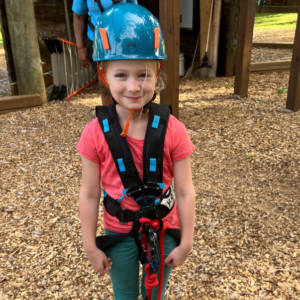 Kelly Riley, Director of Fostering Home Licensing and Training, says, “As a parent, Sanctuary helps me consider things from my child’s perspective. Instead of jumping to conclusions about my daughter being “difficult,” I stop and consider what must be behind the behavior. What is she thinking and feeling that’s leading her to act this way? A lot of times, it helps me respond with compassion instead of frustration.
Kelly Riley, Director of Fostering Home Licensing and Training, says, “As a parent, Sanctuary helps me consider things from my child’s perspective. Instead of jumping to conclusions about my daughter being “difficult,” I stop and consider what must be behind the behavior. What is she thinking and feeling that’s leading her to act this way? A lot of times, it helps me respond with compassion instead of frustration.
Recently I took my 7-year-old daughter to the Miracle Heights Adventures ropes course. She has wanted to do it for years and was so excited when I told her we were going. And then, when she got up there, she froze. It took about half of our time to get through one and a half elements. Then she decided she was done with that adventure. I felt this instinct to try and guilt her into doing more…I mean, really! Weren’t we wasting our time if she wasn’t going to try some more things?
But because of Sanctuary, I realized that just because I knew she was safe didn’t mean that SHE knew she was safe. Her brain and body felt threatened and freezing is a normal response to fear. I chose not to try to convince her that she had nothing to worry about. Logic doesn’t often do a whole lot of good when our stress response is activated anyway. Instead, I focused on being there with her. “It’s ok to feel scared.” “I am here and you can hold my hand.” “Let’s try one step together,” and lots of waiting for her to be ready to take that next step.
We didn’t experience a whole lot of the course, but we had two very meaningful hours together. We left feeling connected instead of upset and at odds with each other. I was able to use my time in the best imaginable way: meeting my daughter where she was and offering unconditional love, support, and encouragement, instead of trying to force something she wasn’t ready for.”
Utilizing Sanctuary in Family Rules
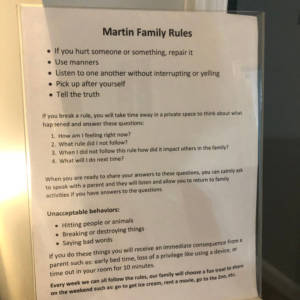 Meredith Martin, Senior Director of Program Excellence, shares, “I have been practicing The Sanctuary Model professionally for more than six years. During these six years, I have also been raising twin girls, now nine years old. My Sanctuary lens is something that my spouse and I have woven into our family structure. First, we set clear, strengths-based rules for our children. I have learned that it is important to be clear with all children, but most especially those who have experienced trauma. Our children have not experienced many of the things our Crossnore clients have endured. But, they have moved several times in their lives, said goodbye to friends, and lost great-grandparents which have exposed them to loss and challenges.
Meredith Martin, Senior Director of Program Excellence, shares, “I have been practicing The Sanctuary Model professionally for more than six years. During these six years, I have also been raising twin girls, now nine years old. My Sanctuary lens is something that my spouse and I have woven into our family structure. First, we set clear, strengths-based rules for our children. I have learned that it is important to be clear with all children, but most especially those who have experienced trauma. Our children have not experienced many of the things our Crossnore clients have endured. But, they have moved several times in their lives, said goodbye to friends, and lost great-grandparents which have exposed them to loss and challenges.
We have our rules written out and copies placed around our home so the kids understand clearly what is expected of them, even when they are having a tough time. When we instituted these rules we had open conversations as a family and even used a child and family therapist at our pediatrician’s office to help us set and clarify what was best for our family. I am a LCSW but I knew it was still important to ask for help when setting rules for my family. In my family, I’m not the child and family therapist, I’m the mom.
Another major way we integrate Sanctuary at home is that we invite our family, when we break a rule (and yes, parents break rules too!), to think first about how we are feeling. Emotional intelligence is a huge part of The Sanctuary Model. It’s also a key piece of our family rule structure. Sanctuary has had a big impact on our parenting and family. We know that we don’t get it right every time (or many times!), but we continue to practice self care and open communication and do better the next time.”
Preparing for the Day to Come
Nelitza Gonzalez, Director of Community-Based Therapy Services, told us how she and her husband practice Sanctuary at home, “As empty-nesters, one way in which my husband and I live sanctuary is by having our morning coffee on our porch with our dogs. This gives us an opportunity to meditate, take in the sounds and sights of nature, and ground ourselves in preparation for the day to come.”
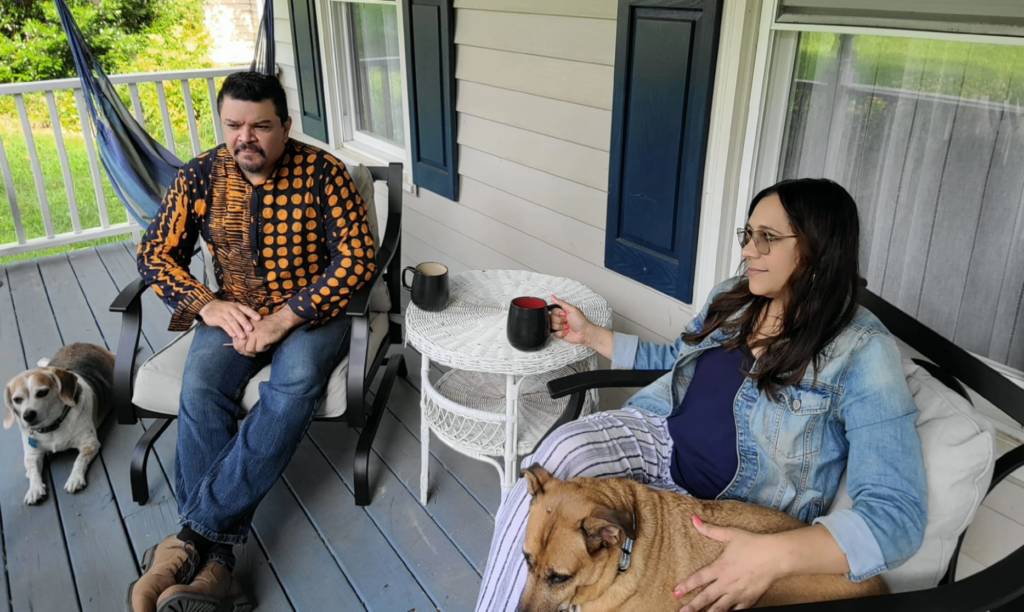
The Family Community Meeting
Community meetings is the tool we use at the beginning of all our meetings. There are three questions to a community meeting:
- How are you feeling today?
- What is your goal for this meeting (or for today)?
- Who can you ask for help today? (Or, what does support look like for you today?)
Each person around the table has the opportunity to ask and answer all three questions. How are you feeling is important because we can’t manage our emotions if we can’t name them. Setting even short-term goals, like for the meeting or for today, helps us stay future-focused. And, naming someone we can ask for help reminds us that we are part of a community and that we can ask for help.
Becky Keener, Quality Coordinator at Crossnore, shares this from her family’s experience, “Our family has incorporated the Community Meeting in our daily lives for 11 years now. We use it in the evening around the dinner table. It’s also helpful when different types of stressors affect our lives, such as: after events, school, or receiving good or bad news. The Community Meeting has helped us as a family to connect. It has taught us to use coping skills and learn how to ask for help.
The Community Meeting was so important, we started sharing this with our family and friends. When others join us for the first time, they have to stop and think: how am I feeling? Over the years, our children have really engaged in the community meetings. We have also added questions like: what are you going to do for self care, how did you see Jesus today, how were you like Jesus today, what is strong in you, and what is something you are good at doing?”
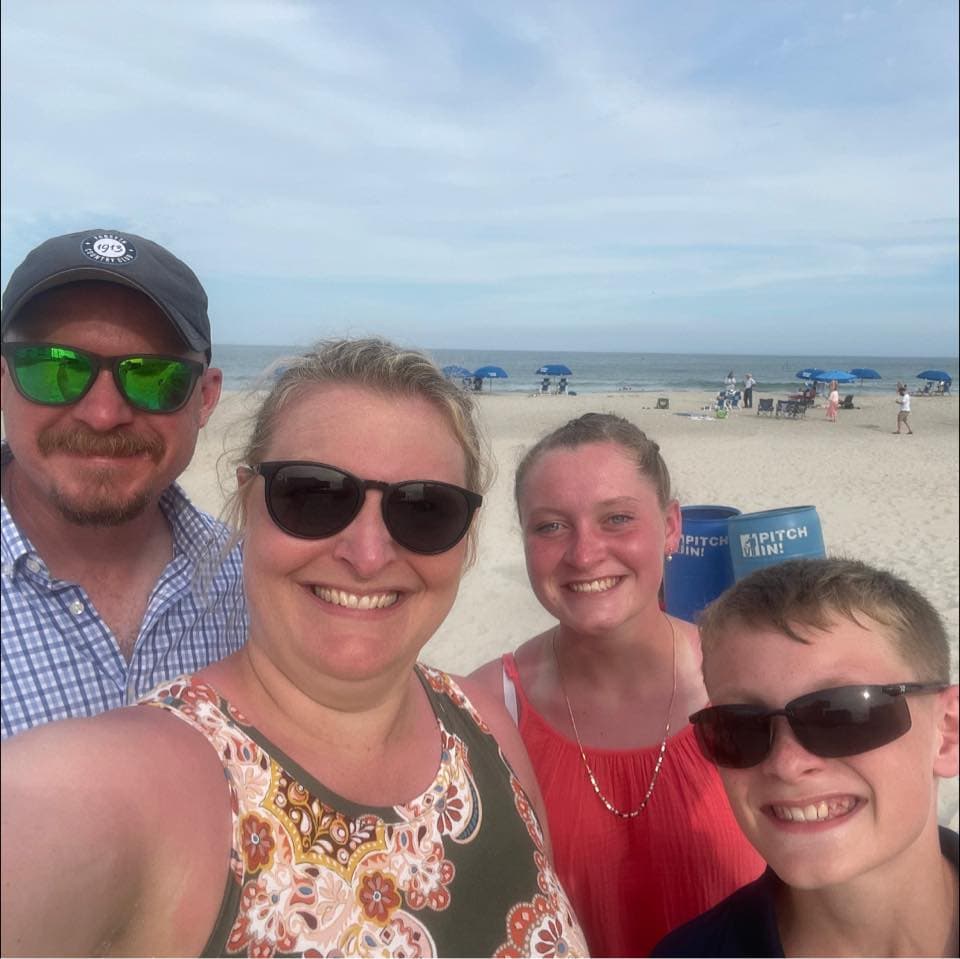
Utilizing Sanctuary in Self Care
 Self care is the regular act of doing something to take care of yourself. It could be something as simple as a regular pedicure or exercising daily (if only exercising were simple!). But it also includes making sure that we are using our Paid Time Off regularly. We take care of ourselves and our families by making sure our finances and legal documents are in order. We take care of our physical bodies by eating well and getting plenty of rest.
Self care is the regular act of doing something to take care of yourself. It could be something as simple as a regular pedicure or exercising daily (if only exercising were simple!). But it also includes making sure that we are using our Paid Time Off regularly. We take care of ourselves and our families by making sure our finances and legal documents are in order. We take care of our physical bodies by eating well and getting plenty of rest.
Amber Rucker, Diversity, Equity, Inclusion, and Belonging Manager, said, “Outside of work, Sanctuary shows up by way of emotional safety planning and self care. When I am not at Crossnore, I resume the roles of partner, sister, daughter, granddaughter, and friend. Without the intentionality of these tools, I would not be able to show up fully in these roles. With all of the external factors that can continue to impact my being and my safety, it is important for me to have a plan to keep myself emotionally regulated. For me, self-care keeps me full, it keeps me at my best.”
Practicing Open Communication
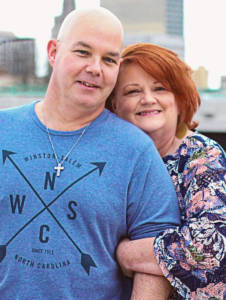 Conflict is inevitable in our lives, whether we are at work or at home. Conflicts arise with coworkers and colleagues. Things happen during the workday that we don’t understand or we wish were different. But our Sanctuary commitment to open communication helps us address these situations when they arise. Open communication includes being honest with one another. It includes listening carefully and giving everyone a chance to be heard. Open communications starts with asking open-ended questions. It is not accusatory. It is not shaming or blaming. Open communication allows us all to show up as our authentic selves with our own feelings and gives us space to communicate those well.
Conflict is inevitable in our lives, whether we are at work or at home. Conflicts arise with coworkers and colleagues. Things happen during the workday that we don’t understand or we wish were different. But our Sanctuary commitment to open communication helps us address these situations when they arise. Open communication includes being honest with one another. It includes listening carefully and giving everyone a chance to be heard. Open communications starts with asking open-ended questions. It is not accusatory. It is not shaming or blaming. Open communication allows us all to show up as our authentic selves with our own feelings and gives us space to communicate those well.
My husband, Jeff, and I like to say that we never argue. And, we don’t. But you don’t get to be newlyweds at our age without a few bumps along the way! We have had a few tense moments as we struggled to show up as our authentic selves. Or, perhaps when we’d like to address a behavior we didn’t care for from the other person. Open communication is the key here. Being transparent about our past, our struggles, and our desires for our marriage isn’t always easy. But when we are honest about our thoughts and feelings, and we share those in a kind and respectful manner, we can resolve anything!



